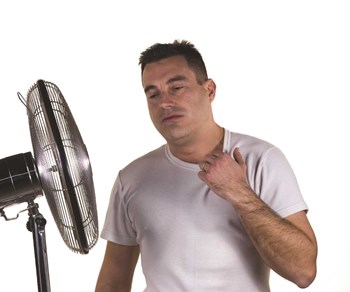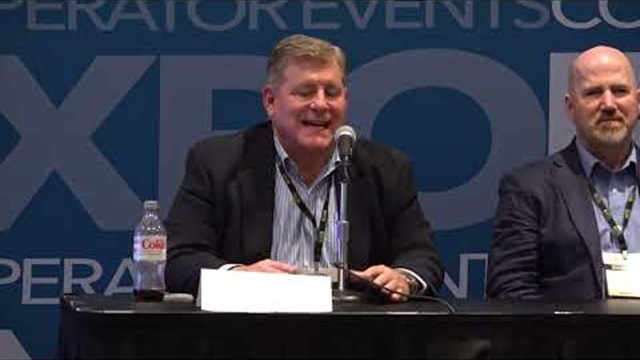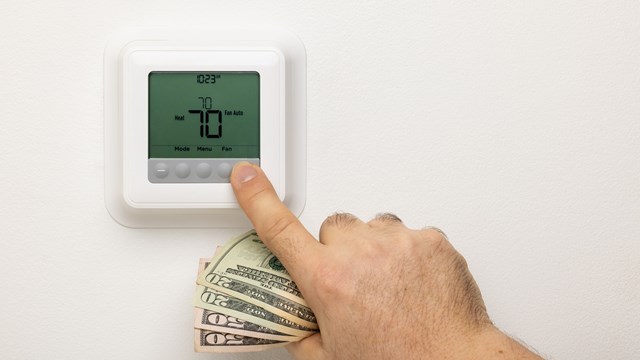
After the devastating winter the New York metro area just experienced, summer couldn’t come soon enough for many of Gotham’s co-op and condo residents. But don’t be surprised when people start forgetting about the cold and start complaining about the sweltering heat that usually heads our way in July and August. Cooling an entire building can get very expensive but no one wants a long, hot, miserable summer—so it’s up to your building’s administration and residents to devise a plan that allows for both comfort and thriftiness.
Community Climate Control
Keeping cool during the summer months can involve climate control at both the macro level (in the form of rooftop chiller equipment and other common infrastructure) and the micro level (in the form of window-mounted A/C units, wall thermostats, etc. in individual units). When it comes to how all those components work together, Edward H. Brzezowski, PE, LEED AP, vice president of The Falcon Group’s energy services section, says that each building is different.
“Medium- and high-rises may have a complex central cooling plant system—typically a chiller, cooling tower, dual temperature or chilled water and condenser water pumps— with air handling units serving chilled water coils to common spaces and fan coils or PTACs serving tenant spaces,” he says. “Whereas other building types may have cooling provided by rooftop or split A/C systems, window A/C units, or PTACs.” PTAC stands for packaged terminal air conditioner units.
Lindsay Robbins, senior project manager for the New York City office of the New York State Energy Research and Development Authority (NYSERDA), works on the development and implementation of green building and energy efficiency programs for multifamily residential buildings.
“The majority of multifamily buildings use wall or window A/C units for cooling, but some larger buildings do use a central chiller,” she says. “Typically that means it also has a cooling tower (usually on the roof, very occasionally on the ground), and some sort of distribution system. For multifamily buildings, the most common type of distribution is a fan coil unit—one per living room and one per bedroom.”
Frank Lauricella, business development manager for The Daylight Savings Company, an energy efficiency engineering consulting firm in Goshen, says that since most of the multifamily building stock in New York City metro is older, A/C is generally at the individual unit level meaning that there is no central air conditioning.
“Of course larger and newer buildings that have central air have air handlers, chillers, etc.,” he says. “A common central system combines heating and cooling through individual units in the apartments that can be controlled. They can be water or air-sourced and usually include heat pumps.”
Cooling 101
Building administrators and managers can keep their building-wide air conditioning equipment working at peak condition by scheduling regular maintenance for the units, including changing filters and making sure thermostats are working properly.
“New York City Local Law 87 requires that every building larger than 50,000 square feet obtain an ASHRAE Level II Energy Audit and Retro-Commissioning (RCx),” Lauricella says. “The RCx process requires that building’s systems operate as they were designed, and if not, recommendations are made for corrective actions. Most deficiencies are corrected with low cost improvements and have a huge impact on energy savings and/or owner’s comfort.”
Brzezowski says it’s vital that a building utilize a building energy management system and work order maintenance (breakdown, scheduled and preventive) system, plus keep equipment records and service logs in a central place.
“Meters dedicated to energy use and water use (where applicable) of the equipment can help track performance over time and under various weather conditions,” he says. “Portable data loggers and wireless sensors can also help track how the system is cooling the building and various space types. Depending on the cooling system type, control valves need to be maintained, motors and pumps serviced, coils cleaned and filters replaced and made sure they are fitting properly and controls and sensors calibrated or replaced.”
When it comes to chillers, Robbins says you need to check that the chilled water temperature is correct (typically 45 degrees F is appropriate), and to help save energy, you can raise the temperature when the outdoor temperature is not midsummer hot.
“This is referred to an ‘outdoor reset’ and is similar to what is done with boilers in the wintertime to increase the chiller efficiency,” she says. “This temperature reset can be done manually, but it’s best to do it automatically. You should use a trial and error method to establish the highest possible chilled water temperature that still allows the building to be kept comfortably cool.”
For buildings that utilize cooling towers, the most important thing is to make sure the tower fans are operating properly. Robbins recommends using multiple stages of cooling tower operations if available, and keeping all pumps and fans clean at all times.
If a building is using an HVAC system, a sound maintenance program is vital—and that includes cleaning the ducts. According to Michael Vinick, president of Duct & Vent Cleaning of America, and a board member of the National Air Duct Cleaners Association (NADCA), every time an air conditioner is in operation, dust, dirt particles, debris, pollen, pet dander and other pollutants are drawn into the duct system and must be cleaned.
In the Wall
It’s no surprise that in New York City, window and through-wall air conditioner units are the most popular form of cooling in co-ops and condos. One only needs to look up while walking down a street to see and hear the numerous air conditioning units operating on hot days.
Lauricella believes a great step to improve efficiency and save money is to use Energy Star rated A/C systems with controllable thermostats, if possible. Monthly maintenance is another important way to ensure the air conditioners are running at their best. Before summer begins, air filters should be cleaned and you should check that there is no air leakage to or from the outdoors. It also helps for building staff to know a thing or two about installation and upkeep. “Some buildings require that window A/C units be properly installed by building staff,” Robbins says. “That is an effective way—if staff are properly trained—to ensure that air leakage is kept to a minimum.”
If a wall unit is broken, residents should never attempt to adjust or perform maintenance on the systems that are the building’s responsibility, or on parts they do not feel comfortable or familiar with. Given the chemical hazard posed by Freon often used as a coolant in some air conditioning units, professionals should be called in for the job.
The Role of the Resident
While qualified professionals or building staff can and should see to some aspects of A/C upkeep, there are plenty of steps that unit owners and shareholders can take to maximize the efficiency and useful life of their A/C units and in-unit components.
“They need to keep their air filters clean, and should turn off the units when not in the room,” Robbins says. “I suggest operating on a high fan speed for peak efficiency—the highest air temperature setting while still keeping the room comfortable.”
In an effort to save energy and money, Brzezowski says there are several things residents can do. They should check to make sure their cooling coils are clean and free flowing, and that their air filters are clean and properly fitted.
“Units should run only when the space is occupied. Remote programmable thermostats should be set to bring the space to comfortable conditions during occupancy,” he says. “Windows and doors should be closed. Window shades and blinds should be used to control sunlight and heat gains. Energy-efficient lighting can help on reducing internal gains and cooling loads.”
Government Resources
Lauricella says a well-managed building has operating manuals for all systems and that an inspection and scheduled maintenance should be a part of the manuals. He also adds that NYSERDA and other utilities have programs aimed at reducing energy costs, and offer ongoing tips on their websites.
NYSERDA’s Multifamily Performance Program (MPP) is a great option for multifamily buildings looking to reduce their energy costs and provide a more comfortable environment for residents.
According to Robbins, the program provides both technical and financial assistance to help multifamily building owners select and install efficiency improvements that will reduce their building’s energy usage (and hence their building’s energy bills) by 15 percent or more. Additionally, NYSERDA’s Advanced Submetering Program assists the owners of master-metered existing buildings with the installation of advanced submeters in apartment and condo units to better control energy use.
“With in-unit meters, residents can more effectively control energy consumption and pay for only the energy they consume,” Robbins says. “Recent studies show that buildings can reduce energy consumption by up to 20 percent within the first year of installation alone using submetering. NYSERDA provides incentives that cover approximately 50 percent of the cost of installing a submetering system.”
Incentives and motivation by building owners, residents and tenants will depend upon the utility metering arrangement (i.e. direct bill or master-metered) and who ultimately pays the bill.
“There are very aggressive program incentives from NYSERDA and utility companies to help building owners to become ‘green’ while saving green,” Brzezowski says. “This includes incentives for energy conservation and demand response programs.”
It’s always nice to be cool, but remember that blasting the air to its full capacity can be costly and can even play a part in causing a blackout. Being smart about being cool, will not only help your building save energy, but also keep your energy costs from going through the roof.
Keith Loria is a freelance writer and a frequent contributor to The Cooperator.









Comments
Leave a Comment